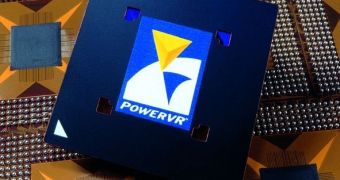The OpenCL framework is steadily but surely heading towards widespread market adoption and recently it reached another important milestone as Vector Fabrics has demonstrated a tool that enables developers to build special OpenCL software for application processors with PowerVR SGX graphics processing units (GPUs).
This tool can that advantage of the PowerVR SGX graphics cores found inside many system-on-a-chip (SoC) solution used in today in tablets, smartphones and other mobile devices to increase the performance of highly parallel applications and algorithms.
"We're delighted to be working with Imagination, a respected industry leader in mobile and embedded graphics, to help developers get the most out of their PowerVR GPUs through OpenCL," says Mike Beunder, CEO of Vector Fabrics.
"Upgrading a sequential program to run efficiently on a parallel GPGPU architecture is not an easy task. Programmers require intimate application knowledge, must learn new programming models and concepts, and avoid introducing hard-to-find bugs.
“Our vfEmbedded tool alleviates the developer from these tasks, greatly assisting the process of modifying sequential code to utilize fast and efficient OpenCL kernels that take maximum advantage of PowerVR GPUs," concluded the company's rep.
The only PowerVR graphics processing unit that is certified by the Khronos group as being conformant with the OpenCL framework is the SGX 535, through the Poulsbo Linux driver.
For those of you that don't remember, Poulsbo is the code name given by Intel to a family of microchips employed in chipsets for low-power Atom platforms.
Unlike all the other controller hubs that Intel released until that time, the graphics core used inside the chipset was developed by Imagination Technologies and was derived from the PowerVR SGX 535, enabling Intel to support 720p as well as 1080i hardware decoding.
More recently, the same graphics core was installed by Intel in its Oak Trail platform for tablet devices, but other companies are also using this GPU in their SoC products, including Apple's A4 chip which powers the iPhone 4.
The vfEmbedded tool supports all target operating system that are compliant with POSIX pthreads, which includes FreeBSD, NetBSD, GNU/Linux, Mac OS X and Solaris.

 14 DAY TRIAL //
14 DAY TRIAL //